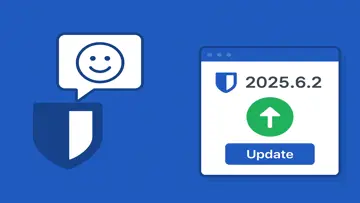Overview of QtWebApp by Stefan Frings
QtWebApp is a powerful and versatile framework designed to facilitate the development of web applications using the popular Qt toolkit. Created by Stefan Frings, this software leverages the rich features of Qt, enabling developers to build responsive, user-friendly web applications efficiently.
Key Features
- Qt Integration: QtWebApp integrates seamlessly with the Qt framework, allowing developers to utilize familiar libraries and tools.
- Flexible Routing: The framework offers robust routing capabilities, making it easy to handle various URL structures and map them to specific application logic.
- Template Engine: QtWebApp includes a built-in template engine that simplifies dynamic content generation, enabling developers to create customizable web pages effortlessly.
- RESTful API Support: The framework supports the development of RESTful APIs, facilitating communication between different components of web applications and external services.
- Security Features: Security is a priority in QtWebApp, which comes with built-in mechanisms to protect against common vulnerabilities like SQL injection and cross-site scripting (XSS).
- Session Management: QtWebApp provides mechanisms for user session handling, allowing developers to manage user authentication and persist data across different requests.
- Asynchronous Processing: The framework supports asynchronous programming, enabling non-blocking calls that can enhance application performance.
Installation and Setup
Installing QtWebApp is straightforward for developers already familiar with the Qt environment. The framework can be easily integrated into existing Qt projects or used to start new ones. The installation process typically involves:
- Downloading the latest version of QtWebApp from its official repository.
- Extracting the files into a designated directory within your Qt project.
- Configuring necessary environment variables and project settings in your IDE.
- Running sample applications to ensure proper installation and configuration.
Development Workflow
The development workflow using QtWebApp is highly intuitive. Developers can start by defining their application's architecture, including routing paths and controllers. With its template engine, creating responsive UI elements becomes a matter of structuring HTML combined with logic embedded in templates.
The framework encourages a modular approach, where different components of the application can be developed independently yet work cohesively. Developers can leverage features such as data models from the Qt framework, enhancing data binding between views and models seamlessly.
User Experience
The user experience (UX) in applications developed with QtWebApp is enhanced by its capabilities to create dynamic content that responds quickly to user input. The asynchronous processing feature allows for smoother interactions without page reloads, making it suitable for modern web standards.
Performance Considerations
QtWebApp is optimized for performance, focusing on minimizing latency through efficient handling of requests and responses. Its support for asynchronous processing further enhances performance by enabling greater concurrency without compromising system resources.
Testing and Debugging
The framework provides several tools to facilitate testing and debugging processes. Unit testing can be integrated into the workflow to ensure application components work as expected. Developers can use logging features to monitor application behavior during runtime effectively.
Documentation and Community Support
The documentation for QtWebApp is well-structured, offering comprehensive guidelines on installation, configuration, and usage across various scenarios. Users can find tutorials, API references, and best practices that serve as valuable resources during development.
The community around QtWebApp is supportive with active forums and discussion boards where developers can ask questions and share insights. This engagement fosters a collaborative environment that significantly benefits newcomers and experienced developers alike.
Potential Use Cases
QtWebApp can be utilized in various domains due to its flexibility and powerful features:
- E-commerce Platforms: Efficient handling of user sessions and dynamic content generation makes it suitable for online shopping environments.
- Content Management Systems (CMS): The template engine's capabilities allow for easy customization of layouts and content organization.
- Data Visualization Tools: With its ability to work with graphics libraries from Qt, it can facilitate data-driven interactive applications.
- Social Networking Sites: Robust routing and session management make it a good fit for applications with user authentication requirements.
Cautions and Limitations
While QtWebApp provides many advantages, it's important to acknowledge potential limitations such as:
- Learner Curve: New users may find the initial learning curve steep if they are not already familiar with the Qt ecosystem.
- Lack of Built-In Components: Unlike some other frameworks that offer out-of-the-box UI components, QtWebApp may require more custom solutions for specific needs.
QtWebApp by Stefan Frings stands out as a solid choice for developers seeking a robust framework for building web applications leveraging the capabilities of the Qt toolkit. Its integration with existing tools, flexibility in routing and templating, along with strong performance metrics, make it an effective solution for a variety of web-based projects. While potential users should consider its learning curve and customizable nature devoid of extensive pre-built components, the overall benefits present it as a worthy contender in the web application development landscape.
Обзор
QtWebApp — это Открытый исходный код программное обеспечение в категории Веб-разработка, разработанное Stefan Frings.
Последняя версия QtWebApp в настоящее время неизвестна. Первоначально он был добавлен в нашу базу данных на 19.10.2010.
QtWebApp работает на следующих операционных системах: Windows.
QtWebApp не был оценен нашими пользователями еще.
Последние обзоры
|
|
UltraISO
Мощный инструмент управления ISO для всех ваших потребностей в образе диска |
|
|
PowerArchiver
PowerArchiver: многофункциональный инструмент для сжатия файлов для пользователей Windows |
|
|
XAMPP
XAMPP: идеальный инструмент разработки для веб-разработчиков |
|
|
Telegram Desktop
Безопасный обмен сообщениями и файлами с помощью Telegram Desktop. |
|
|
Microsoft Visual C++ 2013 Redistributable
Повышение производительности и стабильности с помощью распространяемого компонента Microsoft Visual C++ 2013 |
|
|
EASEUS Partition Master Home Edition
EASEUS Partition Master Home Edition: Эффективное программное обеспечение для управления разделами |
|
|
UpdateStar Premium Edition
Обновлять программное обеспечение еще никогда не было так просто с UpdateStar Premium Edition! |
|
|
Microsoft Edge
Новый стандарт в просмотре веб-страниц |
|
|
Google Chrome
Быстрый и универсальный веб-браузер |
|
|
Microsoft Visual C++ 2015 Redistributable Package
Повысьте производительность системы с помощью распространяемого пакета Microsoft Visual C++ 2015! |
|
|
Microsoft Visual C++ 2010 Redistributable
Необходимый компонент для запуска приложений Visual C++ |
|
|
Microsoft OneDrive
Оптимизируйте управление файлами с помощью Microsoft OneDrive |





